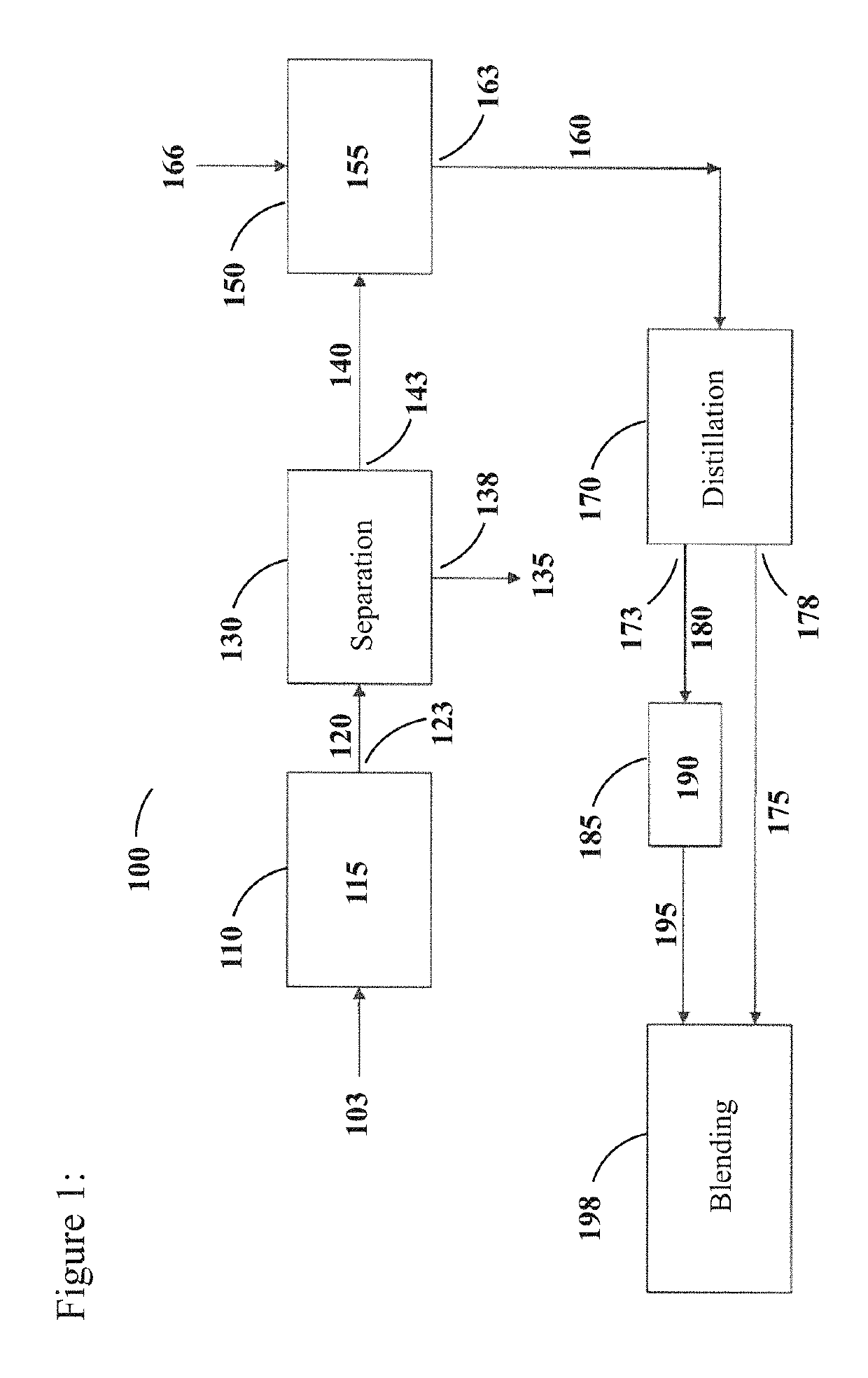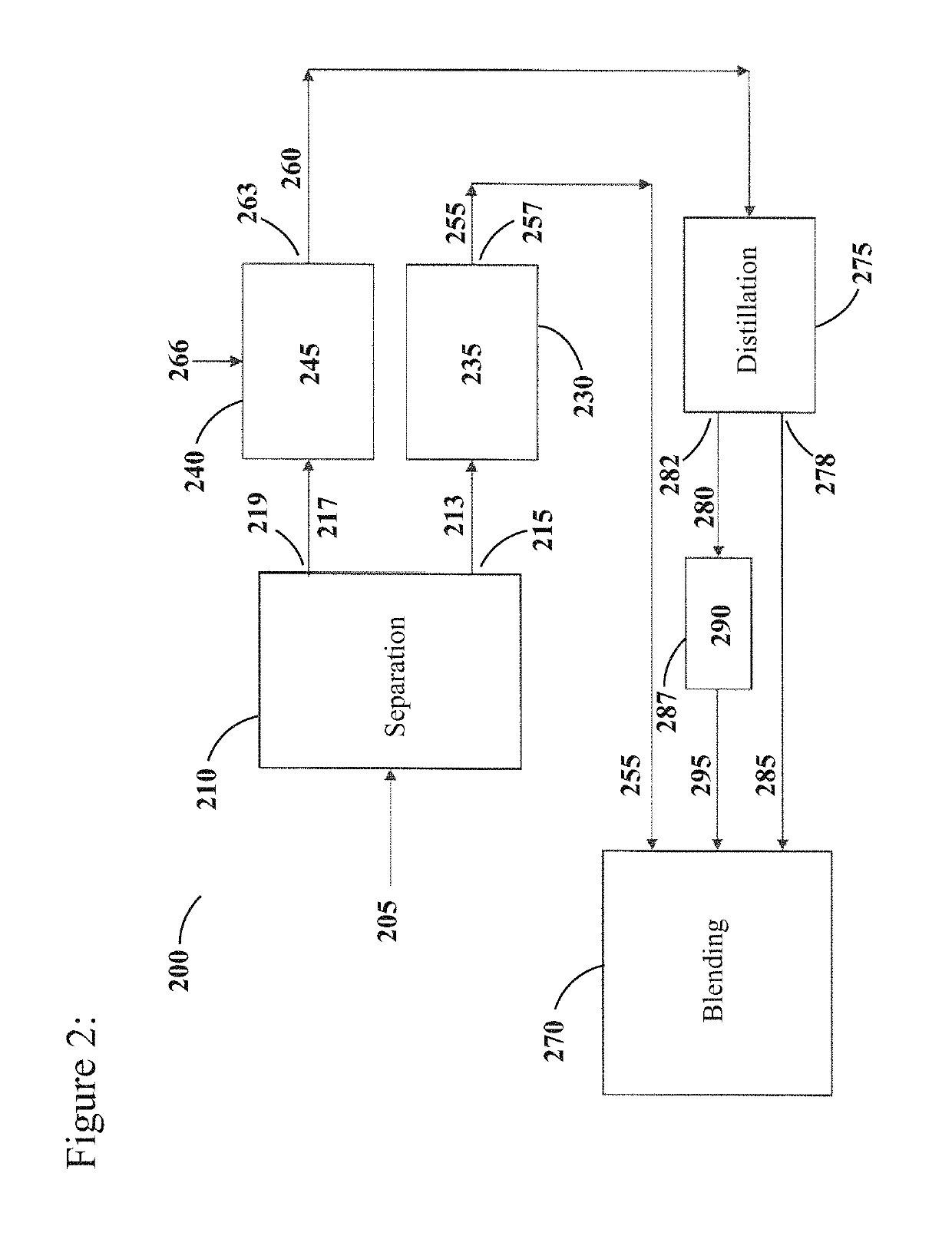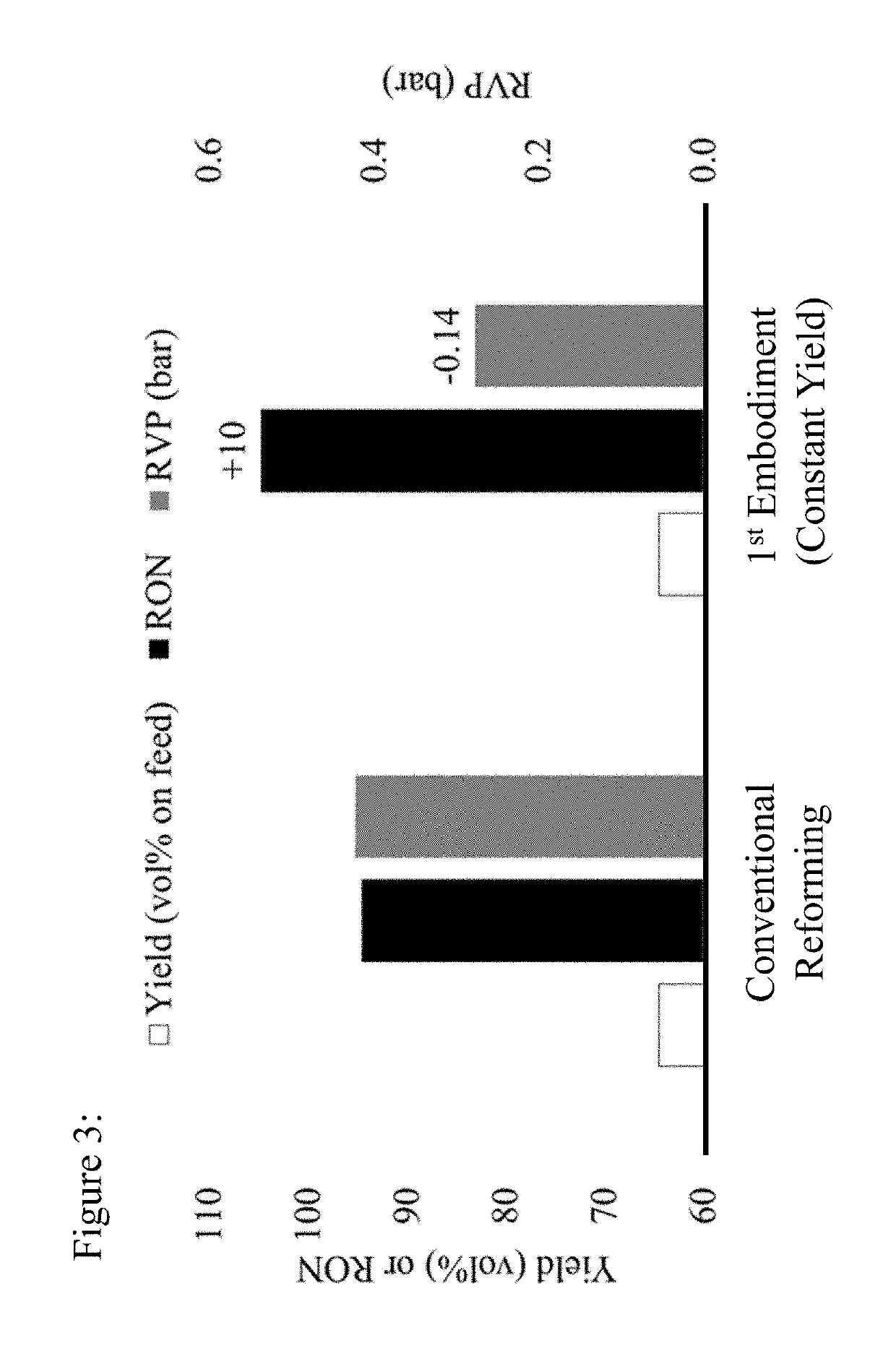Systems for selective naphtha reforming
a technology of selective naphtha and reformer, which is applied in the field of system for selective naphtha reformer, can solve the problems of low aromatic yield of paraffin feed, and the inability to upgrade c4-c5 paraffin in conventional naphtha reformer, so as to facilitate dehydrogenation, facilitate contact, and increase research octane number
- Summary
- Abstract
- Description
- Claims
- Application Information
AI Technical Summary
Benefits of technology
Problems solved by technology
Method used
Image
Examples
example 1
[0080]Table 1 demonstrates the advantage to converting a highly paraffinic feedstock to by a reforming catalyst that is selective for reforming paraffins (corresponding to the second reforming catalyst described herein). A feedstock comprising 90 wt % C5 and C7 paraffins was fed to a reactor maintained at a temperature of 1020° F. (549° C.), a reactor pressure of 68 psig, a liquid weight hourly space velocity of 4.2 hr-1, a H2:hydrocarbon ratio of 0.5 (mol / mol), and a H2O:HC ratio of 3 (mol / mol). The catalyst utilized was a steam reforming catalyst comprising zinc-aluminate spinel impregnated with platinum metal. The first column of Table 1 shows the molecular composition of the paraffinic feedstock (where P=paraffins, N=naphthenes, O=olefins, D=dienes and A=aromatics) in wt. %, while the second column shows the molecular composition of the reformed product. The results show that 37.5 wt. % of the feed was converted to aromatics (with minimal benzene production) while 16.3 wt. % of ...
example 2
[0082]Computer-based modeling was conducted to estimate both the liquid product yield and the product properties resulting from implementing the first embodiment of the inventive processes and systems, as generally depicted in the diagram of FIG. 1. In this embodiment, the first reforming unit (FRU) containing a naphtha reforming catalyst (first reforming catalyst) comprising an alumina support impregnated with platinum was operated at relatively mild temperature conditions that would predominantly convert naphthenes in the hydrocarbon feedstock to aromatics without significant cracking activity, thus allowing paraffins in the hydrocarbon feedstock to pass through the first reforming unit mostly unreacted. Separation of a paraffin-enriched fraction from the first reformer effluent by a separator (SEP) was modeled as occurring in an aromatic extraction unit, based upon publically-available empirical data. The calculated paraffinic fraction (from the first reactor effluent) was then m...
example 3
[0087]Computer-based modeling was conducted to estimate both the liquid product yield and the product properties resulting from implementing the second embodiment of the inventive processes and systems, as generally depicted in the diagram of FIG. 2, particularly with regards to increased product yield and improved product properties. In this experiment, the hydrocarbon feedstock was first separated in a separator (SEP) comprising an aromatic extraction unit to produce a naphthenes / aromatics-enriched first fraction, and a paraffins-enriched second fraction.
[0088]The naphthenes / aromatics-enriched first fraction was modeled as feedstock for upgrading in a first reforming unit (FRU) containing a naphtha reforming catalyst (first reforming catalyst) comprising an alumina support impregnated with platinum. The first reforming unit was operated at relatively mild temperature (decreased by 11° C. relative to the conventional reforming process shown in column 3 of Table 3) that would predom...
PUM
| Property | Measurement | Unit |
|---|---|---|
| boiling point | aaaaa | aaaaa |
| temperature | aaaaa | aaaaa |
| boiling point | aaaaa | aaaaa |
Abstract
Description
Claims
Application Information
 Login to View More
Login to View More - R&D
- Intellectual Property
- Life Sciences
- Materials
- Tech Scout
- Unparalleled Data Quality
- Higher Quality Content
- 60% Fewer Hallucinations
Browse by: Latest US Patents, China's latest patents, Technical Efficacy Thesaurus, Application Domain, Technology Topic, Popular Technical Reports.
© 2025 PatSnap. All rights reserved.Legal|Privacy policy|Modern Slavery Act Transparency Statement|Sitemap|About US| Contact US: help@patsnap.com



